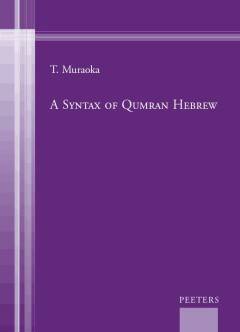
- Afhalen na 1 uur in een winkel met voorraad
- Gratis thuislevering in België vanaf € 30
- Ruim aanbod met 7 miljoen producten
- Afhalen na 1 uur in een winkel met voorraad
- Gratis thuislevering in België vanaf € 30
- Ruim aanbod met 7 miljoen producten
Zoeken
Omschrijving
This is the first, comprehensive description of the syntax of Qumran Hebrew, a language in which the Hebrew documents discovered in the eleven Qumran caves and at some sites in the Judaean desert are written. Features described include, for instance, the values and functions of the status constructus, tense, aspect and mood of the verb, the word order, the grammatical agreement or lack of it in gender and number, the concord or concatenation, the government of the verb. Comparison is constantly made with Biblical Hebrew and Mishnaic - Rabbinic Hebrew. This is important to see the position of Qumran Hebrew in the history of Hebrew. Copiously cited original texts are provided with an English translation by the author. That knowledge of the syntax of this Hebrew is important and has implications for textual criticism of these texts and other compartments such as orthography, phonology, morphology, lexicography, and stylistics is shown with concrete examples.
Alleen bij Standaard Boekhandel
+ 190 punten op je klantenkaart van Standaard Boekhandel
Beoordelingen
We publiceren alleen reviews die voldoen aan de voorwaarden voor reviews. Bekijk onze voorwaarden voor reviews.












